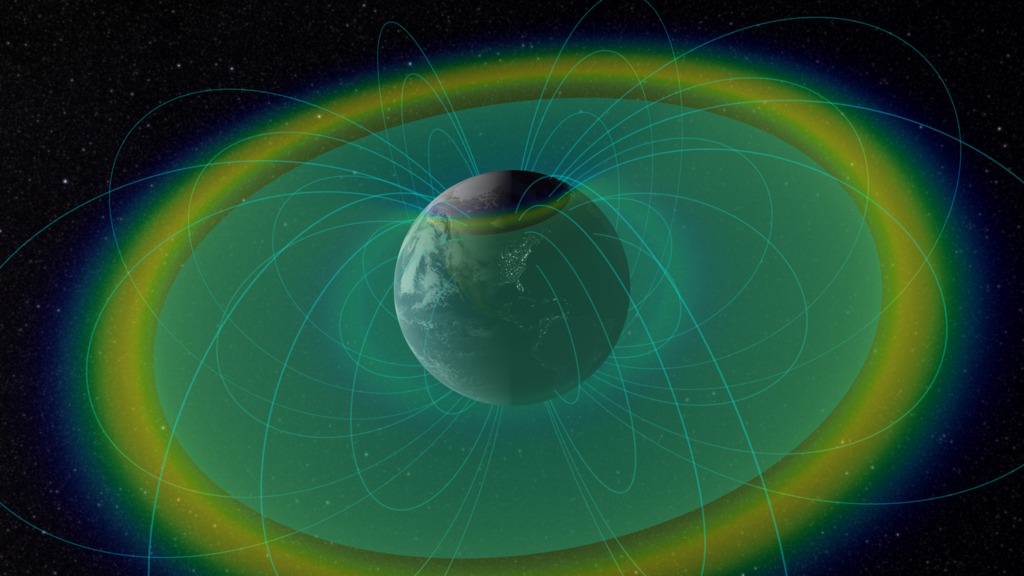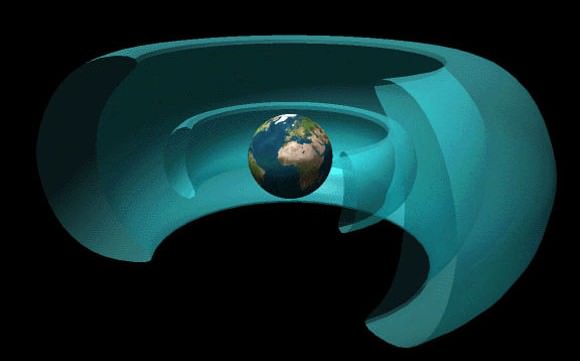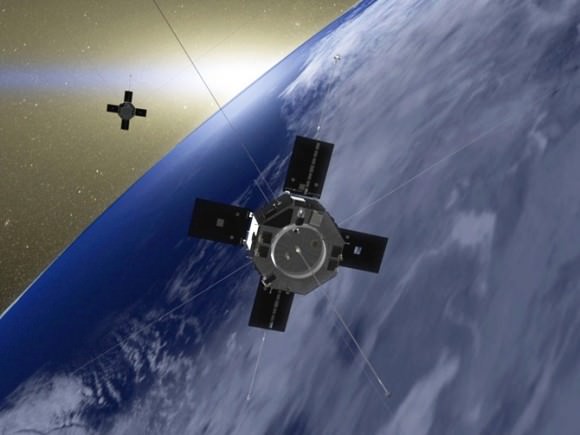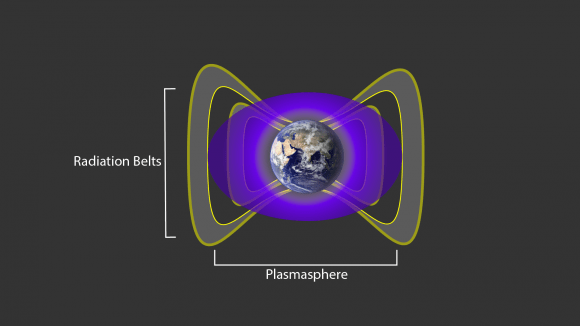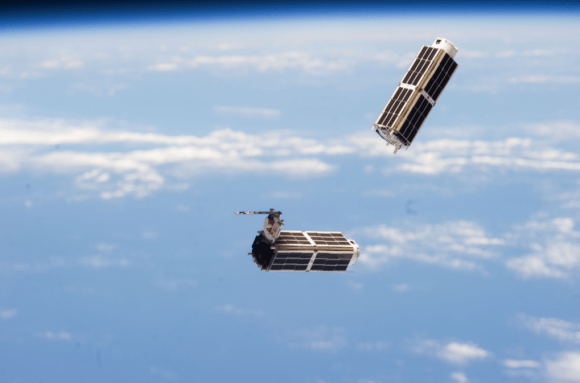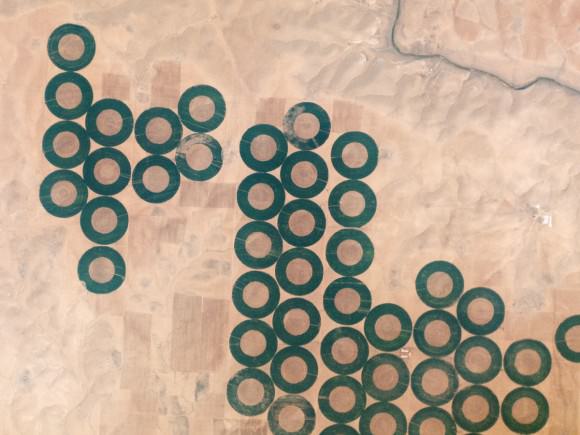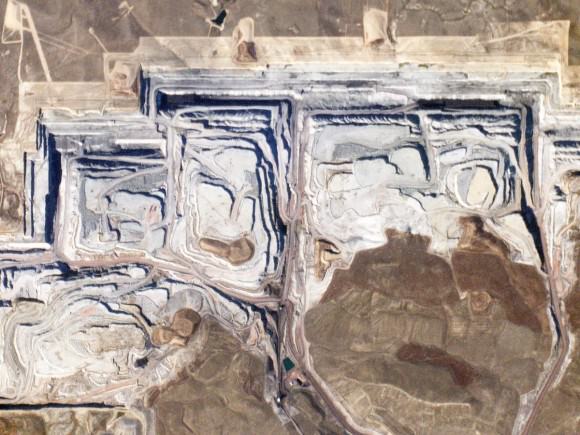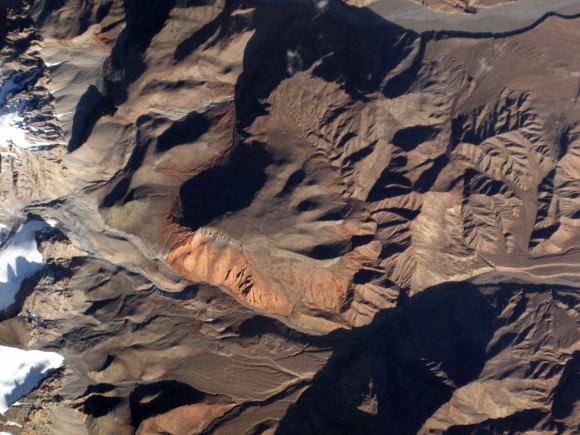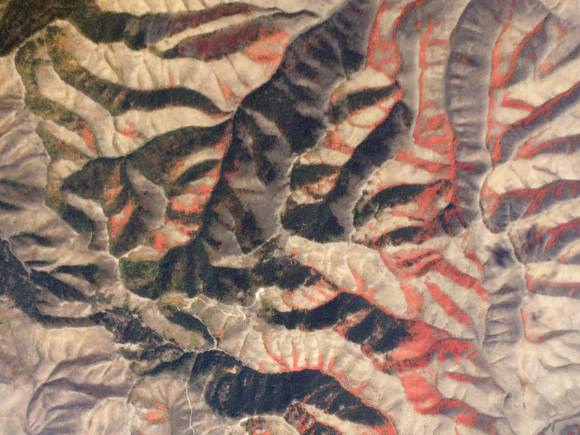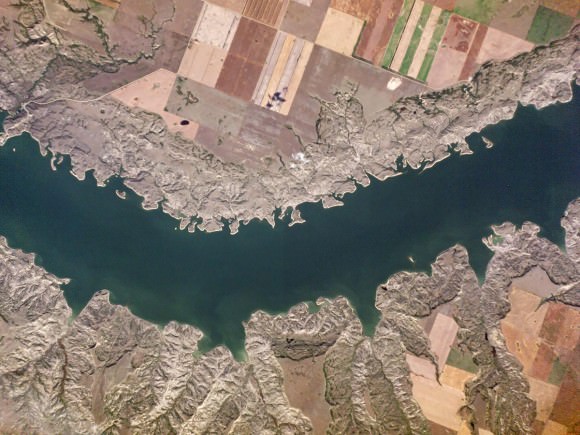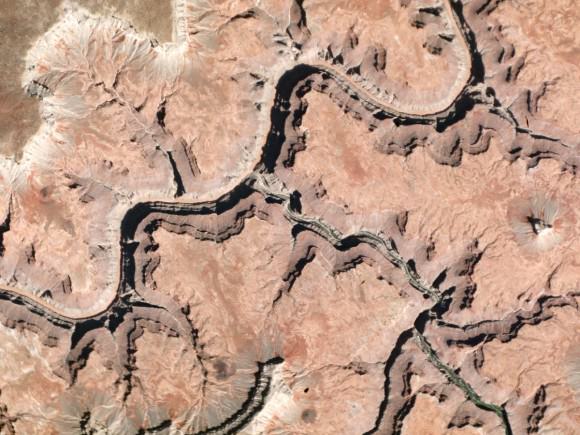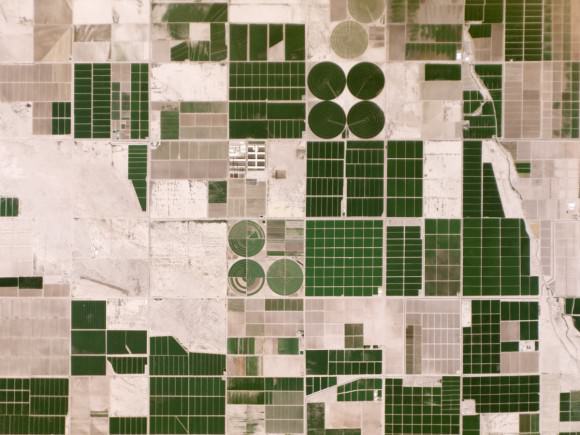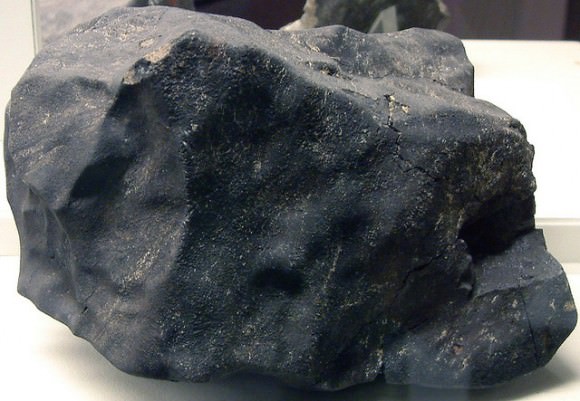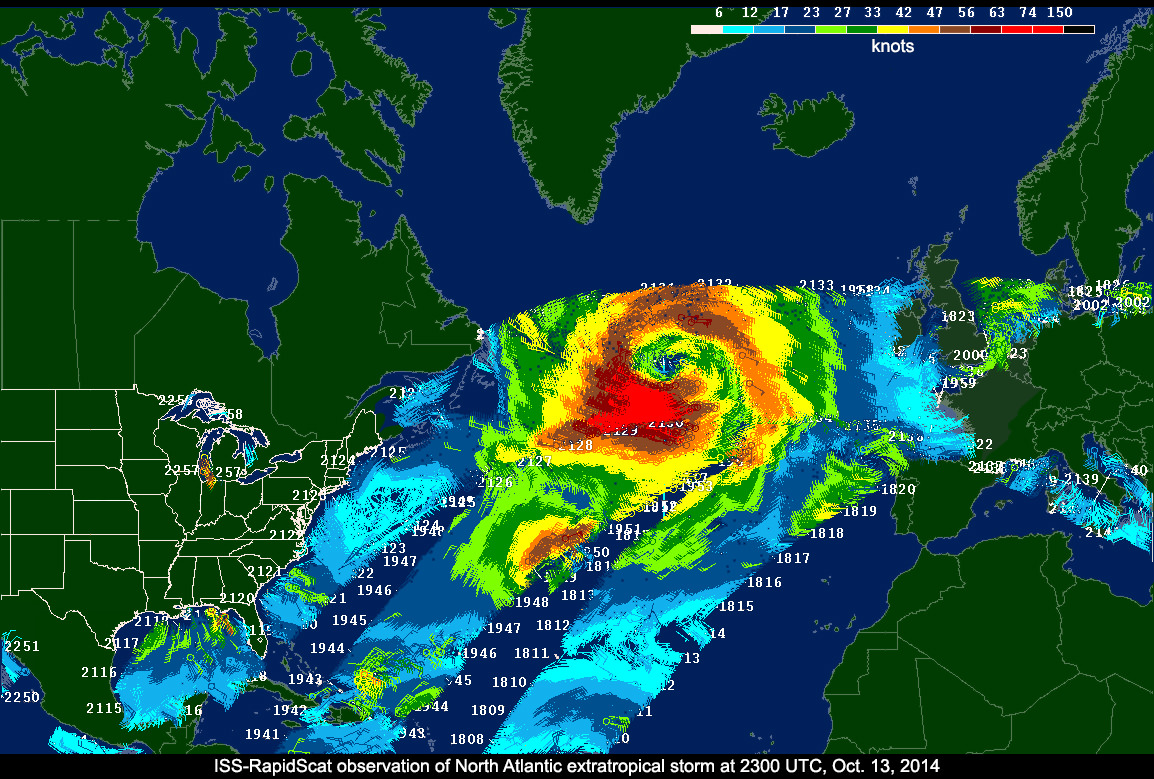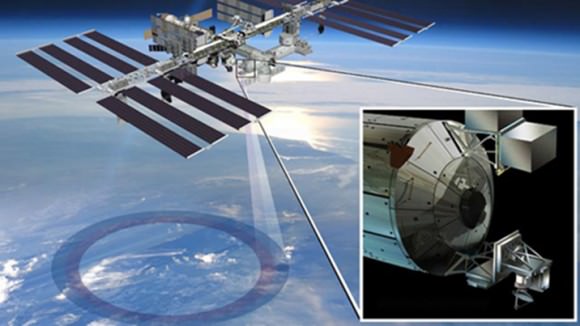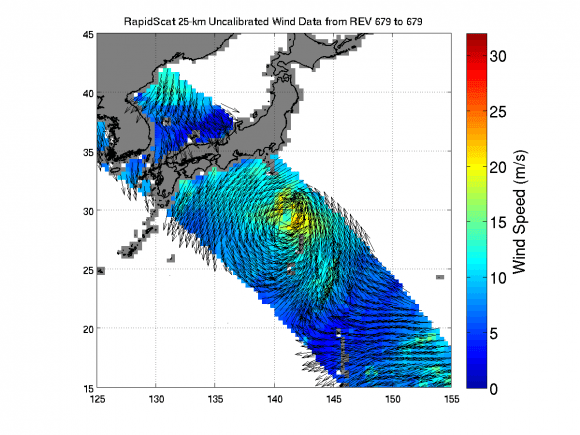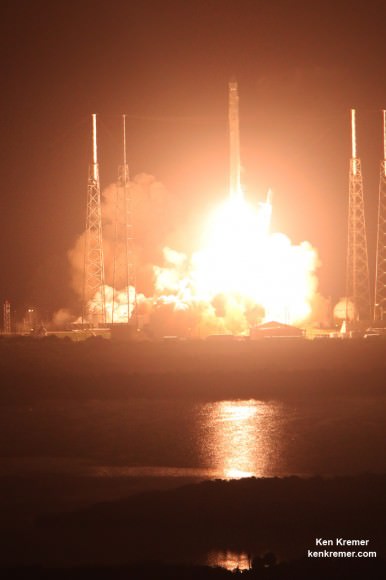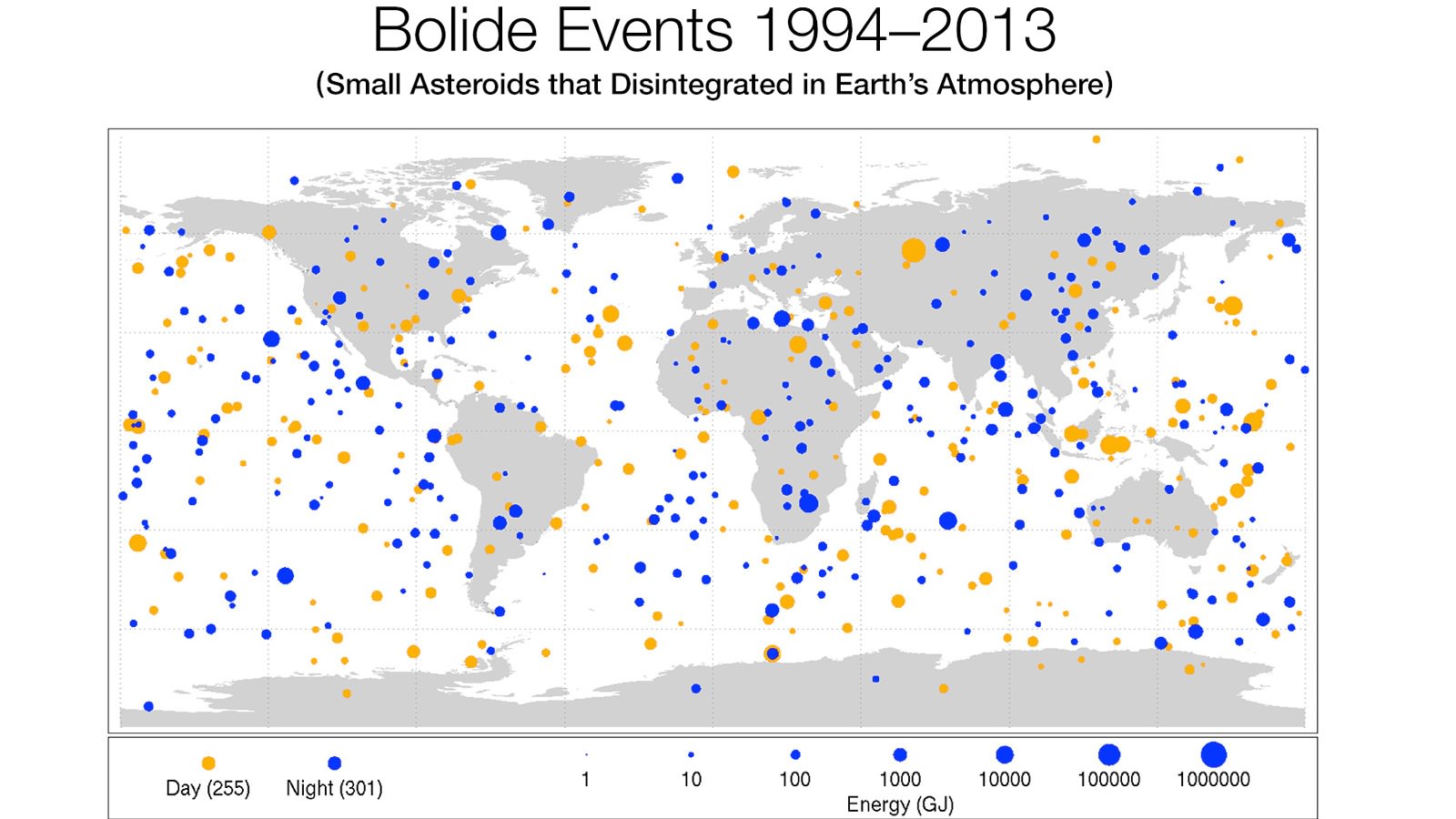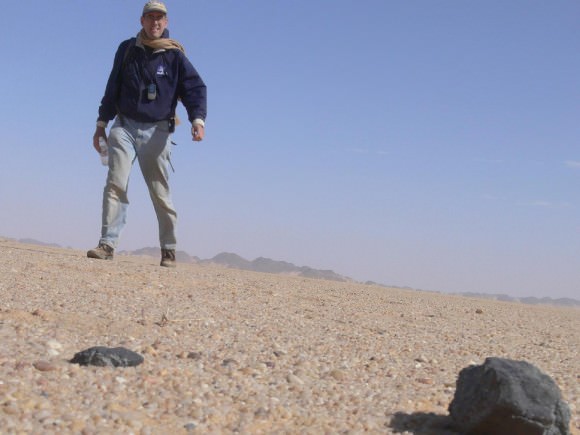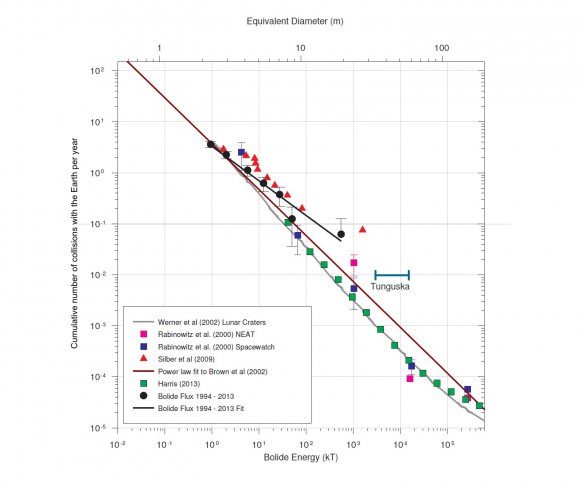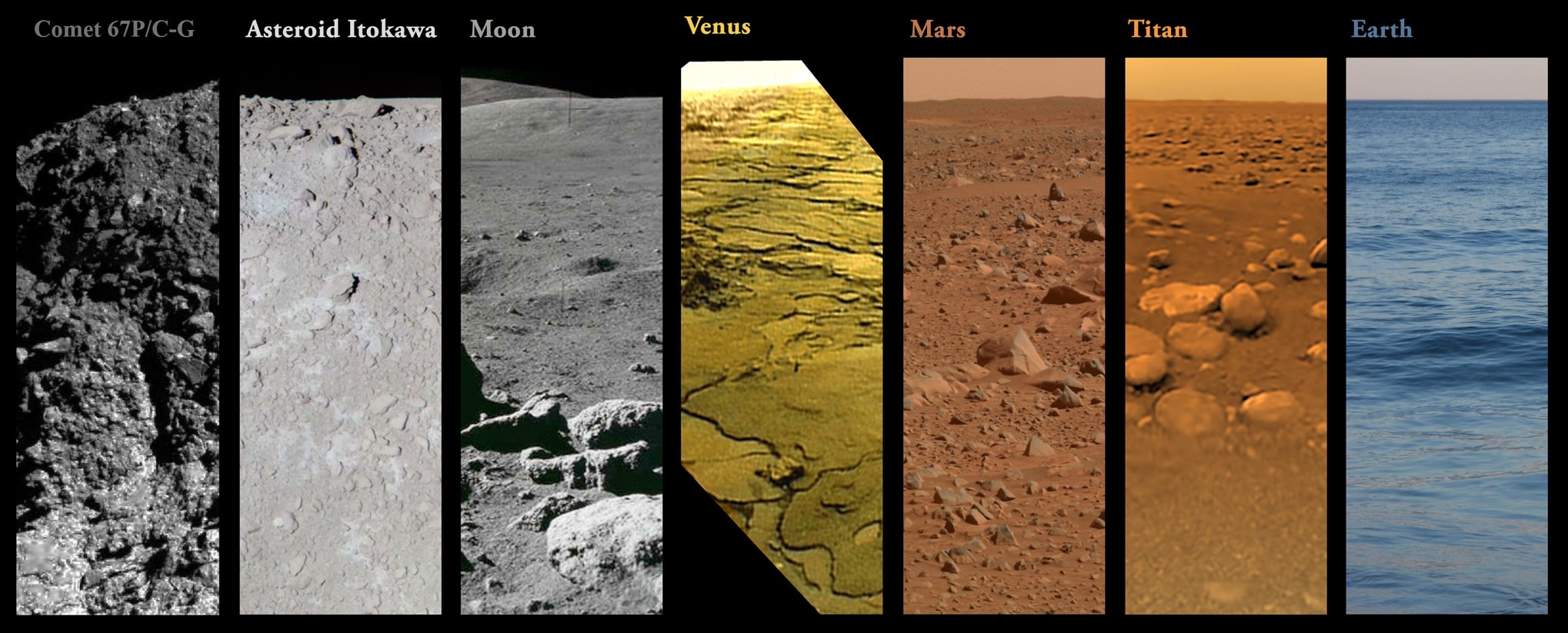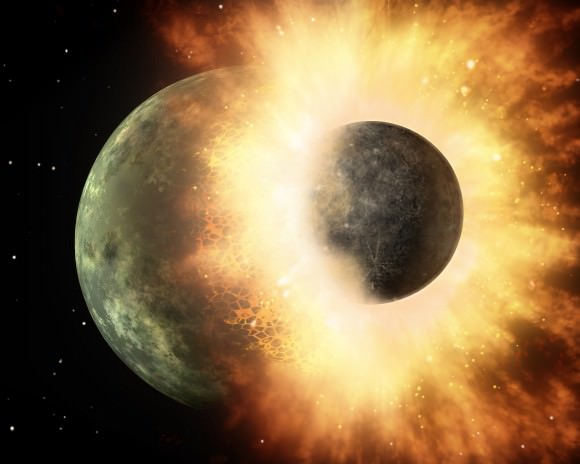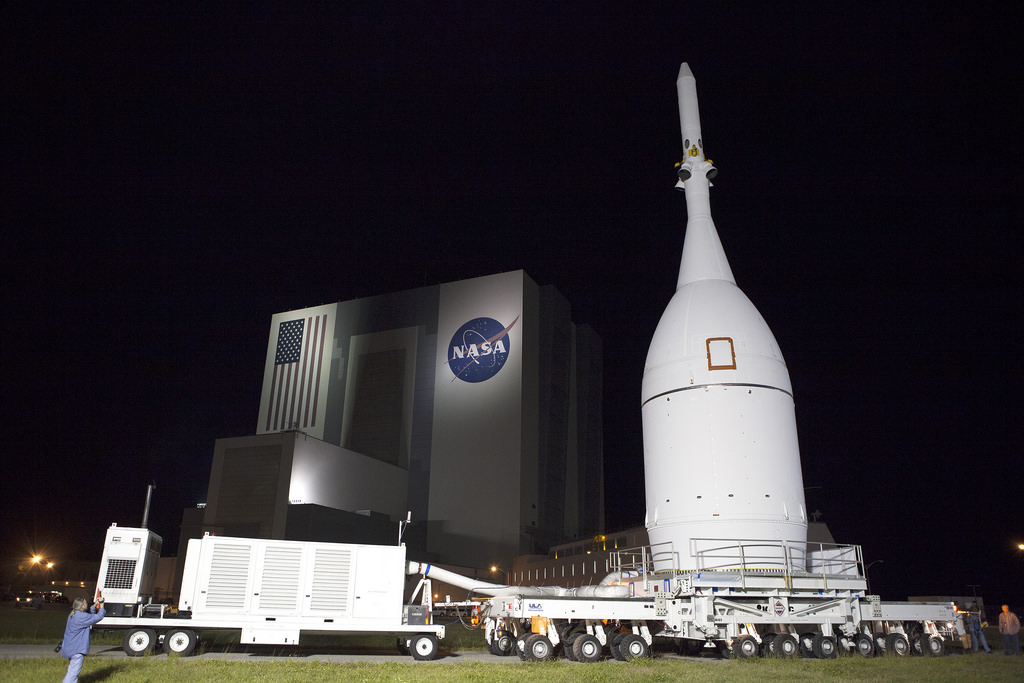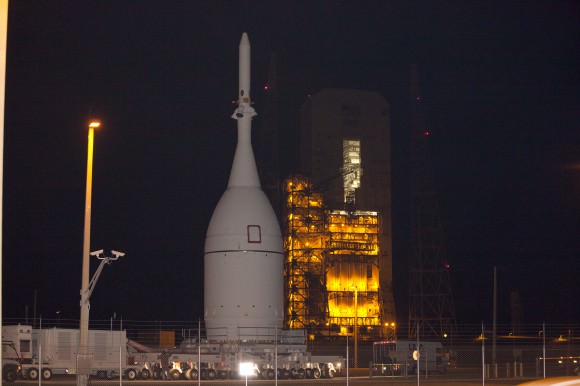During the Hadean Eon, some 4.5 billion years ago, the world was a much different place than it is today. As the name Hades would suggest (Greek for “underworld”), it was a hellish period for Earth, marked by intense volcanism and intense meteoric impacts. It was also during this time that outgassing and volcanic activity produced the primordial atmosphere composed of carbon dioxide, hydrogen and water vapor.
Little of this primordial atmosphere remains, and geothermal evidence suggests that the Earth’s atmosphere may have been completely obliterated at least twice since its formation more than 4 billion years ago. Until recently, scientists were uncertain as to what could have caused this loss.
But a new study from MIT, Hebrew Univeristy, and Caltech indicates that the intense bombardment of meteorites in this period may have been responsible.
This meteoric bombardment would have taken place at around the same time that the Moon was formed. The intense bombardment of space rocks would have kicked up clouds of gas with enough force to permanent eject the atmosphere into space. Such impacts may have also blasted other planets, and even peeled away the atmospheres of Venus and Mars.
In fact, the researchers found that small planetesimals may be much more effective than large impactors – such as Theia, whose collision with Earth is believed to have formed the Moon – in driving atmospheric loss. Based on their calculations, it would take a giant impact to disperse most of the atmosphere; but taken together, many small impacts would have the same effect.
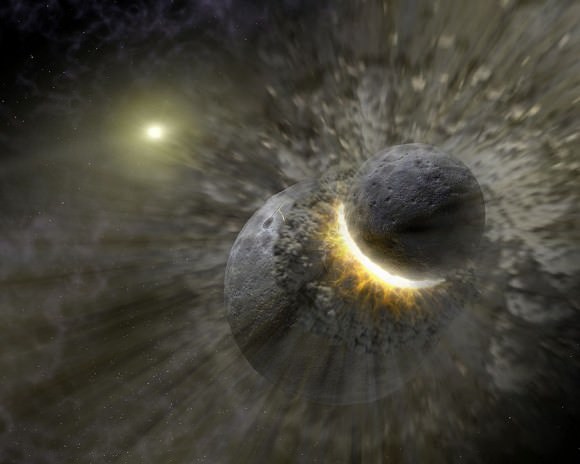
Hilke Schlichting, an assistant professor in MIT’s Department of Earth, Atmospheric and Planetary Sciences, says understanding the drivers of Earth’s ancient atmosphere may help scientists to identify the early planetary conditions that encouraged life to form.
“[This finding] sets a very different initial condition for what the early Earth’s atmosphere was most likely like,” Schlichting says. “It gives us a new starting point for trying to understand what was the composition of the atmosphere, and what were the conditions for developing life.”
What’s more, the group examined how much atmosphere was retained and lost following impacts with giant, Mars-sized and larger bodies and with smaller impactors measuring 25 kilometers or less.
What they found was that a collision with an impactor as massive as Mars would have the necessary effect of generating a massive a shockwave through the Earth’s interior and potentially ejecting a significant fraction of the planet’s atmosphere.
However, the researchers determined that such an impact was not likely to have occurred, since it would have turned Earth’s interior into a homogenous slurry. Given the appearance of diverse elements observed within the Earth’s interior, such an event does not appear to have happened in the past.
A series of smaller impactors, by contrast, would generate an explosion of sorts, releasing a plume of debris and gas. The largest of these impactors would be forceful enough to eject all gas from the atmosphere immediately above the impact zone. Only a fraction of this atmosphere would be lost following smaller impacts, but the team estimates that tens of thousands of small impactors could have pulled it off.

Such a scenario did likely occur 4.5 billion years ago during the Hadean Eon. This period was one of galactic chaos, as hundreds of thousands of space rocks whirled around the solar system and many are believed to have collided with Earth.
“For sure, we did have all these smaller impactors back then,” Schlichting says. “One small impact cannot get rid of most of the atmosphere, but collectively, they’re much more efficient than giant impacts, and could easily eject all the Earth’s atmosphere.”
However, Schlichting and her team realized that the sum effect of small impacts may be too efficient at driving atmospheric loss. Other scientists have measured the atmospheric composition of Earth compared with Venus and Mars; and compared to Venus, Earth’s noble gases have been depleted 100-fold. If these planets had been exposed to the same blitz of small impactors in their early history, then Venus would have no atmosphere today.
She and her colleagues went back over the small-impactor scenario to try and account for this difference in planetary atmospheres. Based on further calculations, the team identified an interesting effect: Once half a planet’s atmosphere has been lost, it becomes much easier for small impactors to eject the rest of the gas.
The researchers calculated that Venus’ atmosphere would only have to start out slightly more massive than Earth’s in order for small impactors to erode the first half of the Earth’s atmosphere, while keeping Venus’ intact. From that point, Schlichting describes the phenomenon as a “runaway process — once you manage to get rid of the first half, the second half is even easier.”
This gave rise to another important question: What eventually replaced Earth’s atmosphere? Upon further calculations, Schlichting and her team found the same impactors that ejected gas also may have introduced new gases, or volatiles.
“When an impact happens, it melts the planetesimal, and its volatiles can go into the atmosphere,” Schlichting says. “They not only can deplete, but replenish part of the atmosphere.”
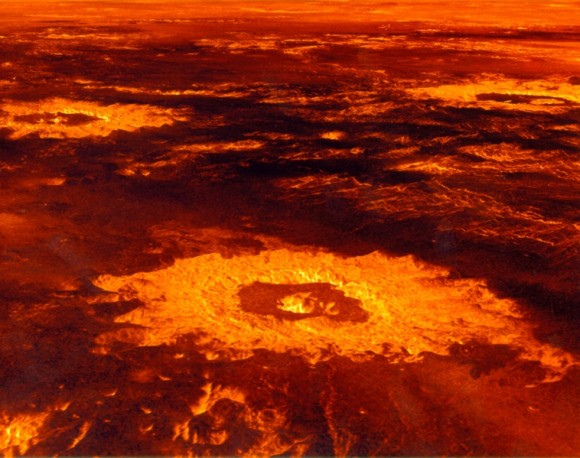
The group calculated the amount of volatiles that may be released by a rock of a given composition and mass, and found that a significant portion of the atmosphere may have been replenished by the impact of tens of thousands of space rocks.
“Our numbers are realistic, given what we know about the volatile content of the different rocks we have,” Schlichting notes.
Jay Melosh, a professor of earth, atmospheric, and planetary sciences at Purdue University, says Schlichting’s conclusion is a surprising one, as most scientists have assumed the Earth’s atmosphere was obliterated by a single, giant impact. Other theories, he says, invoke a strong flux of ultraviolet radiation from the sun, as well as an “unusually active solar wind.”
“How the Earth lost its primordial atmosphere has been a longstanding problem, and this paper goes a long way toward solving this enigma,” says Melosh, who did not contribute to the research. “Life got started on Earth about this time, and so answering the question about how the atmosphere was lost tells us about what might have kicked off the origin of life.”
Going forward, Schlichting hopes to examine more closely the conditions underlying Earth’s early formation, including the interplay between the release of volatiles from small impactors and from Earth’s ancient magma ocean.
“We want to connect these geophysical processes to determine what was the most likely composition of the atmosphere at time zero, when the Earth just formed, and hopefully identify conditions for the evolution of life,” Schlichting says.
Schlichting and her colleagues have published their results in the February edition of the journal Icarus.
Further Reading: MIT News


